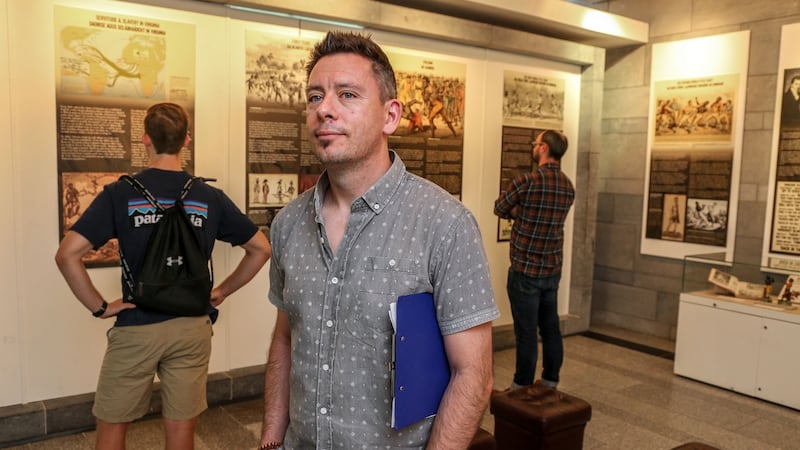When freed slave Tom Molineaux arrived in Galway in 1818, few knew that he had been the first "American sports star" and unofficial world boxing champion.
Less than a decade before, the bare knuckle fighter had been declared "champion of America" and had contested the first ever world boxing title. However, he died, destitute that same year in a Galway army barracks and was buried in Mervue in an unmarked grave.
Now, exactly two centuries later, he is to be remembered with a plaque and with an exhibition of his life which opens later this week in the Galway City Museum.
Molineaux, who was inducted into the International Boxing Hall of Fame in 1997, was brought up on a tobacco plantation in Virginia and given his owner's surname, as was the practice in slavery at the time.
Galway city museum education and outreach officer Brendan McGowan explains that the plantation owners often pitted their slaves against each other in bare knuckle fights.
“This is how Tom gained his freedom, as the son of his owner wagered in a drunken haze that Tom could defeat another man’s slave,” he says.
‘Shameful’ episode
When he won, he was awarded $500 – five times the original incentive – and his liberty. He moved to New York where he worked on the docks and earned the “champion of America” title in fighting.
He arrived in England, then the centre of the boxing world, in 1809, and was trained, managed and financed by fellow freed slave, Bill Richmond.
In December 1810, Molineaux took on the then English champion, Tom Cribb, who was declared winner after 39 "bloody" rounds watched by several thousand spectators.
However, many apparently believed Molineaux should have been champion, and the fight result is remembered as “one of the most shameful episodes in British sports history”.
A rematch was arranged in September 1811 in Leicester, which lasted 19 minutes, as Cribb had been in specialised training whereas Molineaux had to earn money for Richmond on tour.
‘A whole chicken’
A contemporary account recorded that Molineaux had “devoured a whole chicken and a large apple pie . . . washed down with several pints of porter” before the fight, when his jaw was broken.

Molineaux travelled to Ireland in 1815, and taught the art of using fists instead of sticks in areas of Connemara and Mayo. A fever epidemic was sweeping the west when he arrived in poor health and penniless in Galway.
He was cared for by three drummers with the 77th ( East Middlesex) regiment, stationed in the “Shamble barracks” in Lombard Street.
After his death on August 4th, 1818, news of “Molineaux the Pugilist” hit British papers. His prowess was recorded in books, cartoon drawings and prints, and ceramic figurines which the Galway museum is exhibiting.
On August 2nd, a bilingual plaque commissioned by the Galway City Museum and Galway Civic Trust will be unveiled at St Patrick's national school built on the site of the "Shambles barracks", where the boxer spent his last days.
More details from Galway City Museum at galwaycitymuseum.ie.











